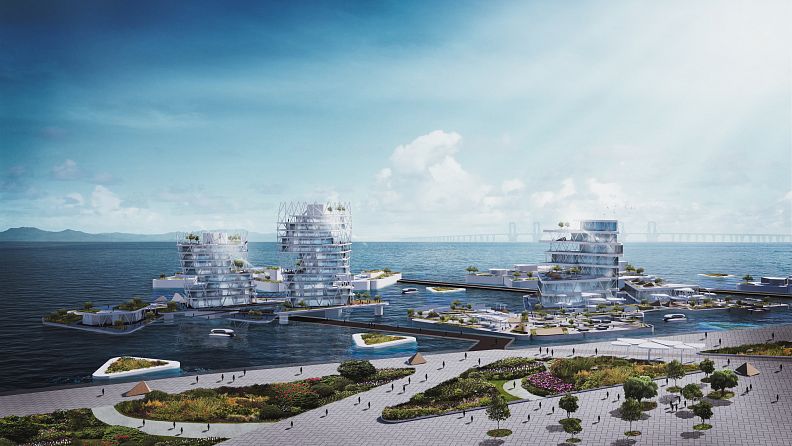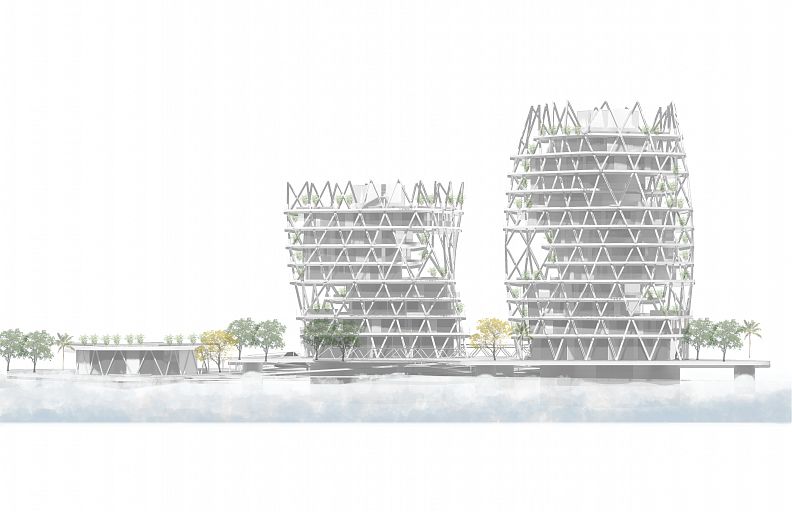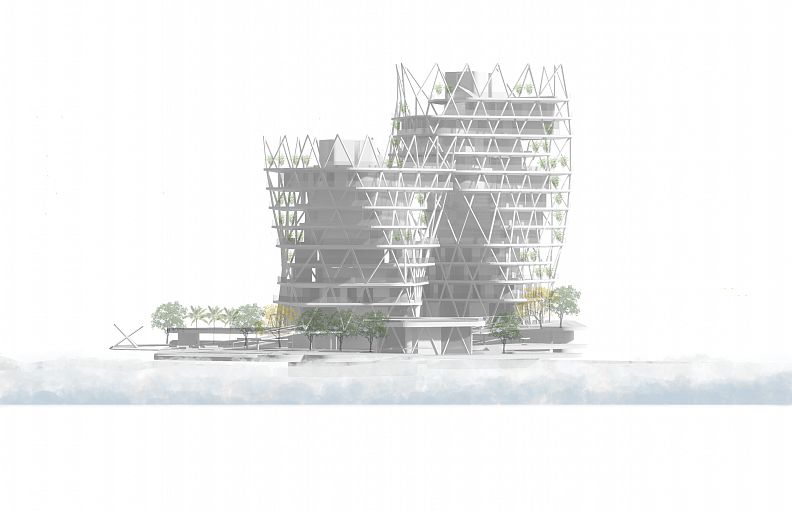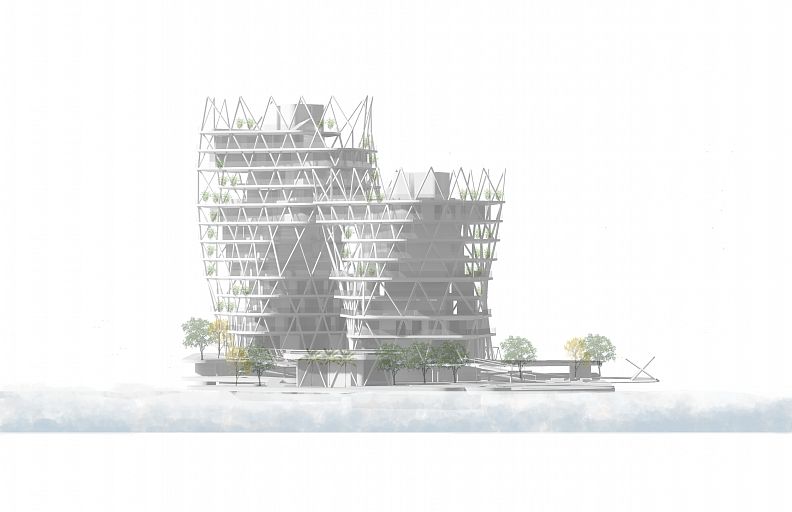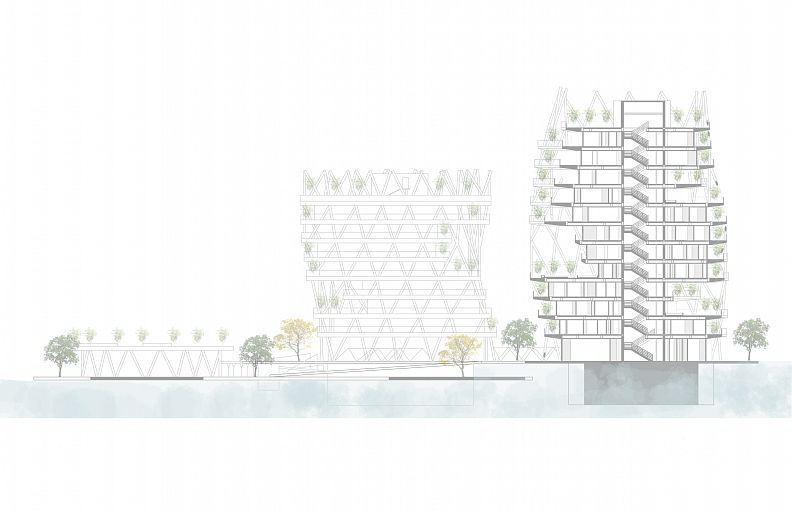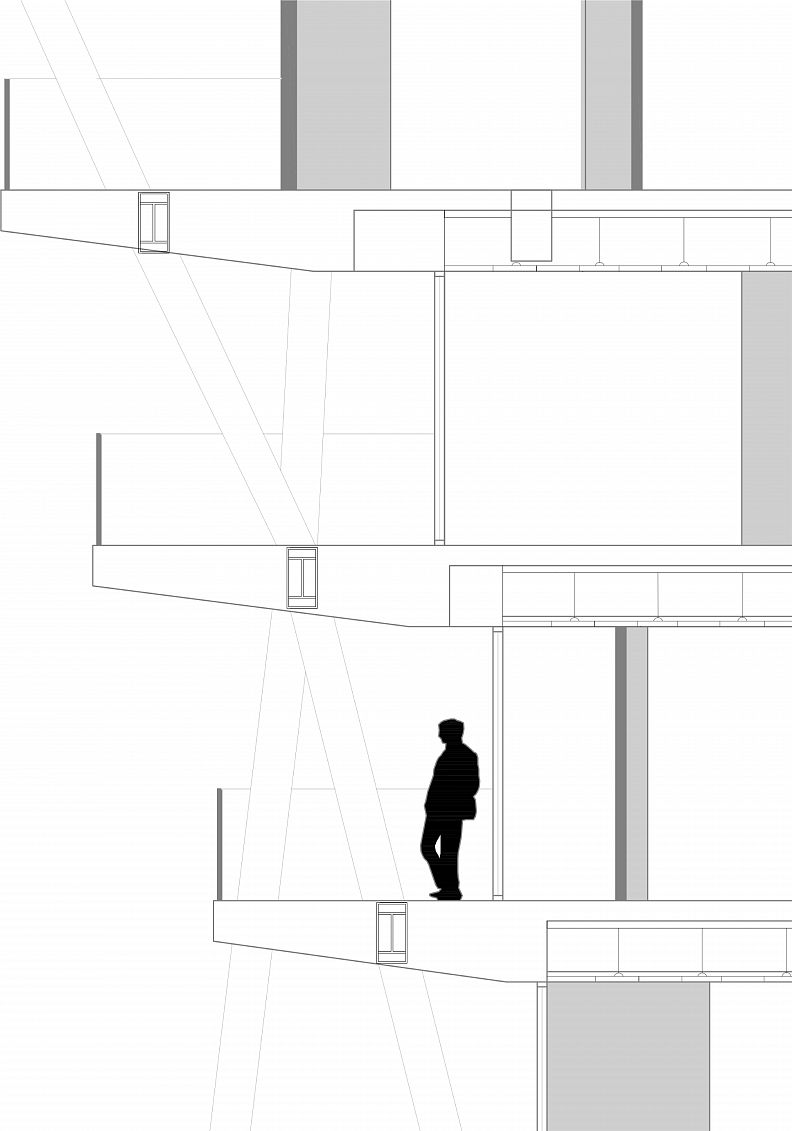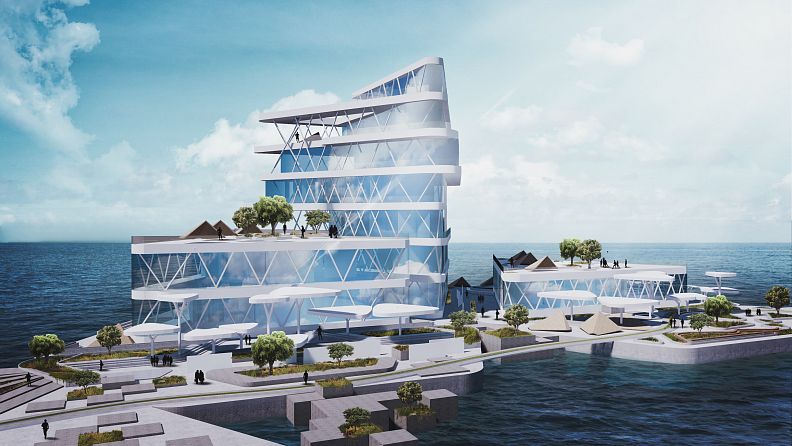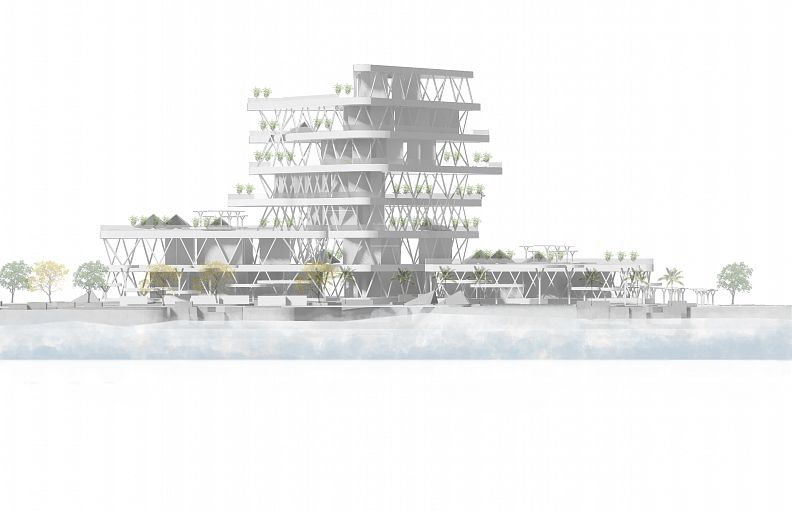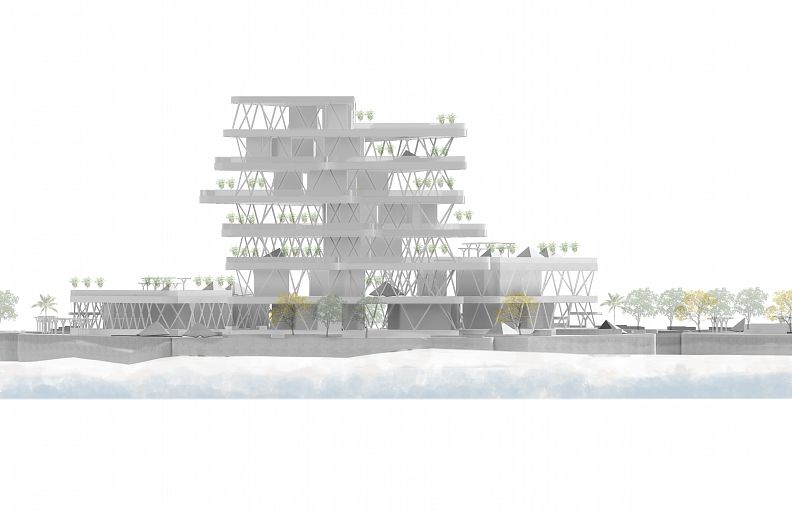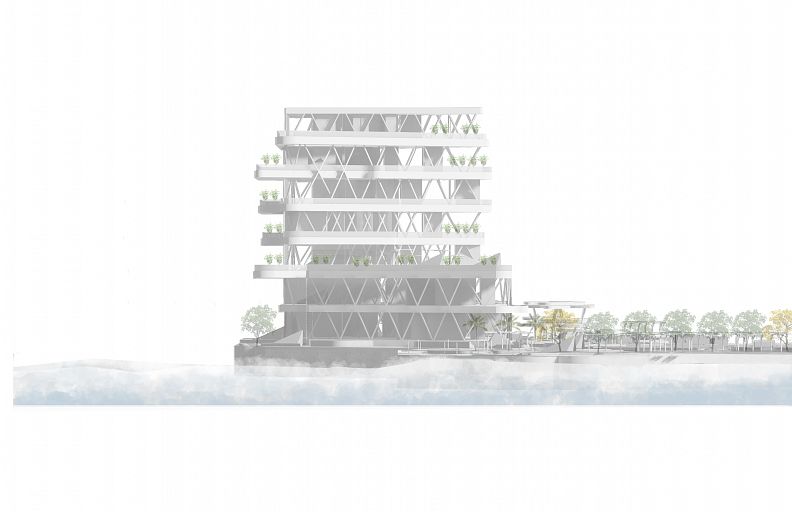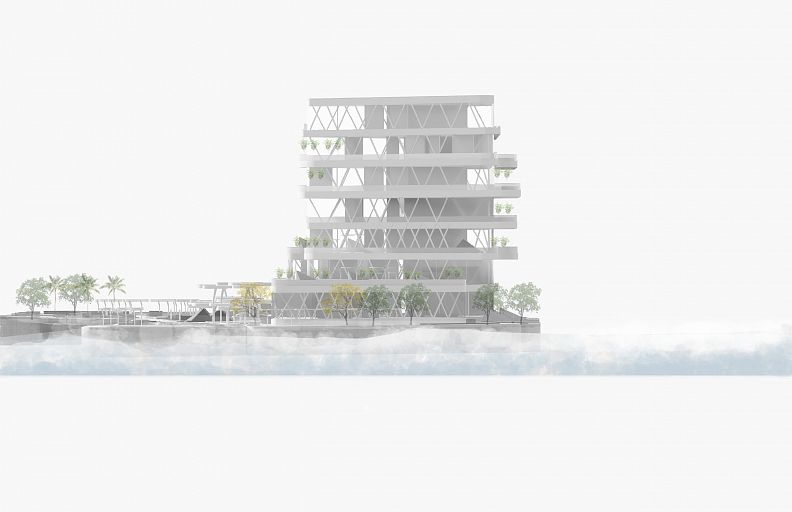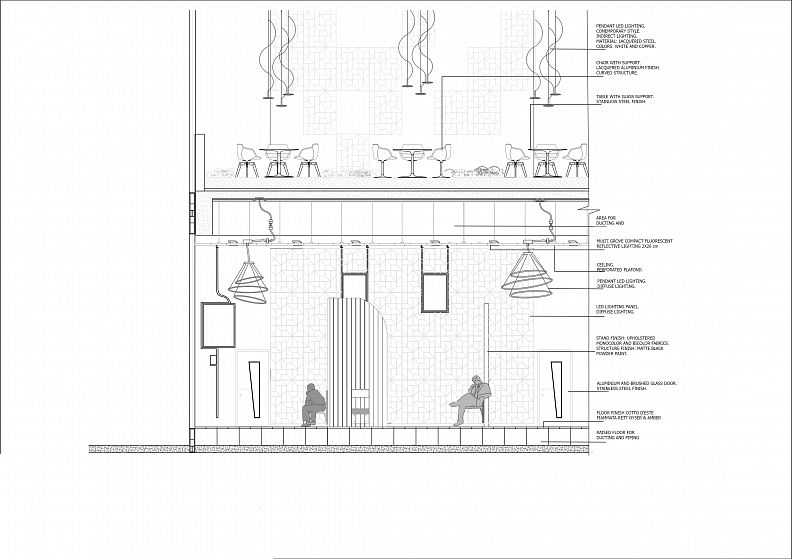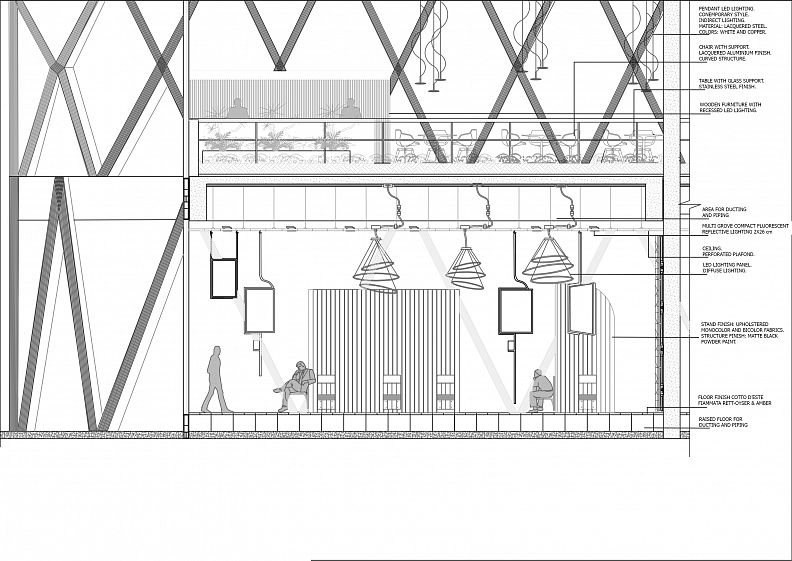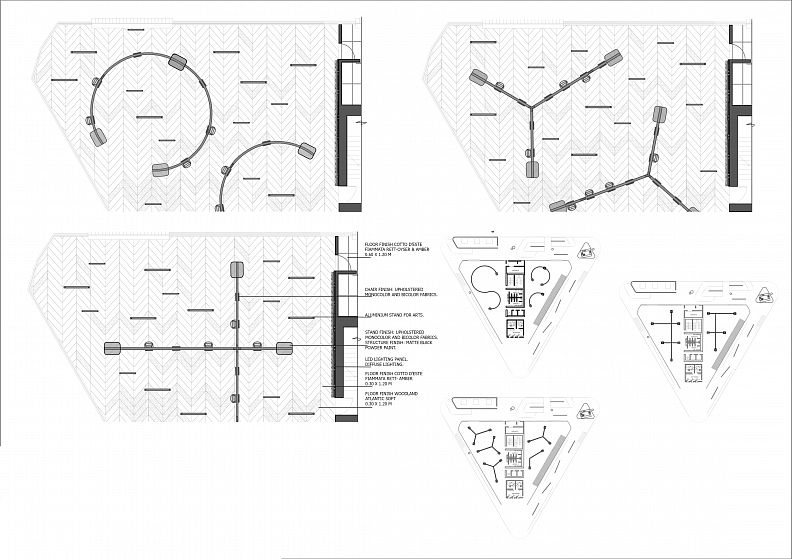Maracaibo: Floating City - Architecture against the Threats of Climate Change

Project idea
Sometimes it seems that technology advances faster than our imagination and in this case not only technology, but also the impact global warming caused. Climate change is a reality that has been getting worse for many years, bringing consequences and radical changes that are already noticeable on the planet, being one of these the sea level rise, which is caused by the melting of the poles, and greenhouse gases concentration. The rate of sea level rise has doubled and continues to rise rapidly, which is why, according to the Intergovernmental Panel on Climate Change (IPCC), by 2100 it could rise more than a meter, and there are forecasts that are much more discouraging.
Water has already left consequences and is starting to invade cities causing frequent flooding and infrastructure damage, where coastal cities are more vulnerable and more likely to disappear underwater. For this reason, it is important to rethink the relationship between the built environment and water, making sure the architecture and urbanism of the cities adapt to face the sea level rise, and avoid the worst-case scenario.
Feeling the commitment as "the generation of climate change", it is up to us to set a guideline in terms of floating architecture that allows us to face these environmental threats, making a replicable proposal over time.
Project description
After determining a risk map, the city is divided into areas from higher risk to lower risk. The area with the highest risk of flooding is due to the sea level rise of approximately 2 meters, with wave impacts of up to 12 meters being the closest to the coast; the area with a medium level of risk is affected by the drain failure, topography (landslides and plains); and the area with a low level of risk is affected by drain failure and infrastructure failure (road failure).
When making a replicable and adaptable proposal over time, we find ourselves in the need to establish a modular design based on a triangular 60x60x60 concrete platform, able to modulate and integrate with others, allowing freedom of composition. The two buildings developed within the proposal are a Research Center for Climate Change with a Cultural Center, and a mixed Multifamily Housing Complex.
In order to supply the 2050 urban plan, it was decided to take as a fundamental basis the principle of urban resilience; which is defined as the capacity that the city of Maracaibo will have to face and adapt to impacts or catastrophes progressively, while allowing evolution at a structural and social level. Bringing resilience to the basic services that it must have
to achieve the sustainability of the building to be developed. On the other hand, the new city of 2050 is the reflection of the collective memory that is transmitted in the location of the new urban services. It is proposed to treat the current hydrographic system, as well as the ravines, to create a boulevard around the area that leads to the coast, to break with the existing urban barrier and integrate the city that remains after the disaster and the new city on the water, providing walkways to connect different green spaces.
The coastal edge is taken as an urban catalyst, investigating the strategic lines that would allow achieving the goal of integrating the city with the coastal edge, therefore the following are determined: sustainable mobility, drainage system and urban corridor. After this, a list of tactics is broken down within each of these strategic lines, which are: eco-boulevard platforms, light rail rain, urban equipment network, cable car, new building typologies, free pedestrian route, cycle path, road with public transport, and gastronomic axis.
Finally, these strategic lines are taken and divided into a three-stage action plan, in order to prepare the city progressively for climate change, which correspond to: 2020 Conditioning, 2030 Transition, and finally 2050 living with the lake.
Stages of development:
First stage “conditioning” 2020: it is based on recognizing the risk that the city will face, relocate buildings with higher risk of flooding or condition them with a building passage typology. Implement pedestrian routes, bicycle routes, maritime routes and light rail train public transport.
Second stage "transition" 2030: implement the concept of urban resilience, emergence of new types of productivity, creation of a linear park in the ravine and boulevard on the coast with recreational activities, and integration of the first platforms as public space.
Third stage "living with the lake" consists of a linear park in the ravines, a boulevard on the coast with recreational activities. Appearance of the rest of the platforms as continuity of the city on the water.
Outdoor or landscaping areas:
The design of the landscaping is achieved by following the prime shape of the platform, fragmenting it to create paths and sidewalks that allow you to go around the complex. In the same way, tree planting plays a very important role in landscaping allowing a cool environment, as well as the integration with the underground areas, bleachers, benches, games, viewpoints, and bicycle lanes that define the user's stay.
Conception of the buildings shape:
For the buildings built on platforms, dynamic figures are sought, that allow a harmonious relationship with the aquatic environment where they will be located, but that at the same time, provide easy mobility between each space, being flexible through modules that can be expanded, adapted and moved through platforms. Since buildings are intended to be self-sustaining, their design must incorporate the principles of sustainability, using insulating materials, taking advantage of natural elements and weather factors, such as sunlight and natural ventilation,also making use of alternative energy sources that correspond to solar panels, windmills, turbine system, hydroponic domes, desalination plants; incorporating both internal and external vegetation to promote air purification, control humidity and prevent direct solar radiation, creating microclimates that provide environmental quality to users.
Structure:
The structure of the buildings is exoskeleton or diagrid, which are a series of triangles, usually made of steel, that combine vertical and lateral support in one element, making the building rigid, efficient and lighter than a traditional tall building. The exoskeleton structural system of the buildings reduces internal supports, saving space and construction materials, allowing openings naturally and providing greater flexibility for installations and systems.
Therefore, Floating Architecture is sustainable, technological, legal, financially possible, and capable of adaptation. It is the most correct response to such a changing world, where it’s time to see the probability of the impossible as a reality.
Technical information
The triangular 60x60x60 concrete platforms, are cast inside with a steel grid with a 1cm epoxy paint coating, which prevents corrosion. The platforms manage to float thanks to the distribution of the loads generated on them, their direction is from bottom to top, it complies with the Archimedes' principle, "In order for an object to float in water, it must displace a weight of fluid equal to its own weight".
The structure of the buildings is exoskeleton or diagrid, but for each building it is designed in a different way. For the Research Center for Climate Change with a Cultural Center the diagrid profiles have a rectangular section. On the other hand, for the Mixed Multifamily Housing Complex the diagrid section is cylindrical; in both cases this structure is joined to the beams by a bolted and welded steel plate. In the same way all the steel used in buildings is covered with epoxy paint.
Based on international standards of the rights to be safety at sea, it was decided to include an escape capsule system for the emergency system in addition to lifeboats.
Co-authors
Archt.Carlos Marval - Tutor
@carlitosmarval
